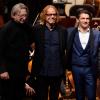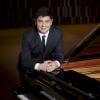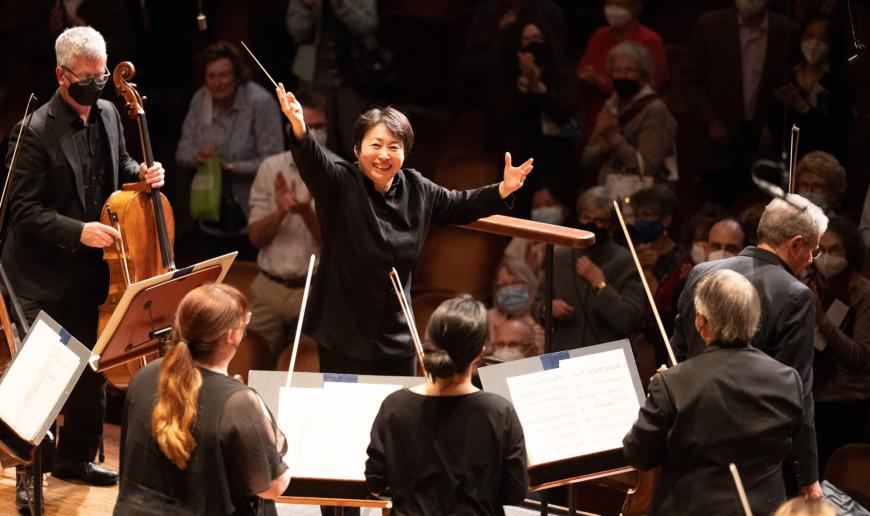
Is there anything new to say about Beethoven’s Ninth Symphony?
Warhorse-weary concertgoers may have been asking themselves that question as they filed into Davies Symphony Hall on Saturday, Dec. 3, for the last of three weekend performances of the landmark work by the San Francisco Symphony. A remarkable, revivifying reading of the piece, led by guest conductor Xian Zhang, reframed the matter.
Great performances don’t say things about a piece, as if they were commenting on Beethoven or any other composer. They engage with a work, in a collaboration that’s analogous to what musicians do with their instruments, breathing and coaxing them to immediate life. The familiar is made new, reinvented in the moment. Past becomes present. The immersive vitality of live performance is thrillingly reaffirmed.
Zhang, music director of the New Jersey Symphony, elicited phrasing, emphases, tempos, and inner details to consistently telling effect. From the early measures, in the descending open intervals of the strings, a feathery, chaste lightness gave the eruption that followed a dramatic weight. The well-judged contrasts and narrative sure-footedness continued. With pert string figures and chortling, gusty contributions from the woodwinds, Zhang brought a zesty strain of humor to a piece that normally induces few smiles. Yet nothing here was precious or self-conscious. The tension built inexorably, in striking contours, the climax heightened by slightly extended rubato before the concussive payoff.
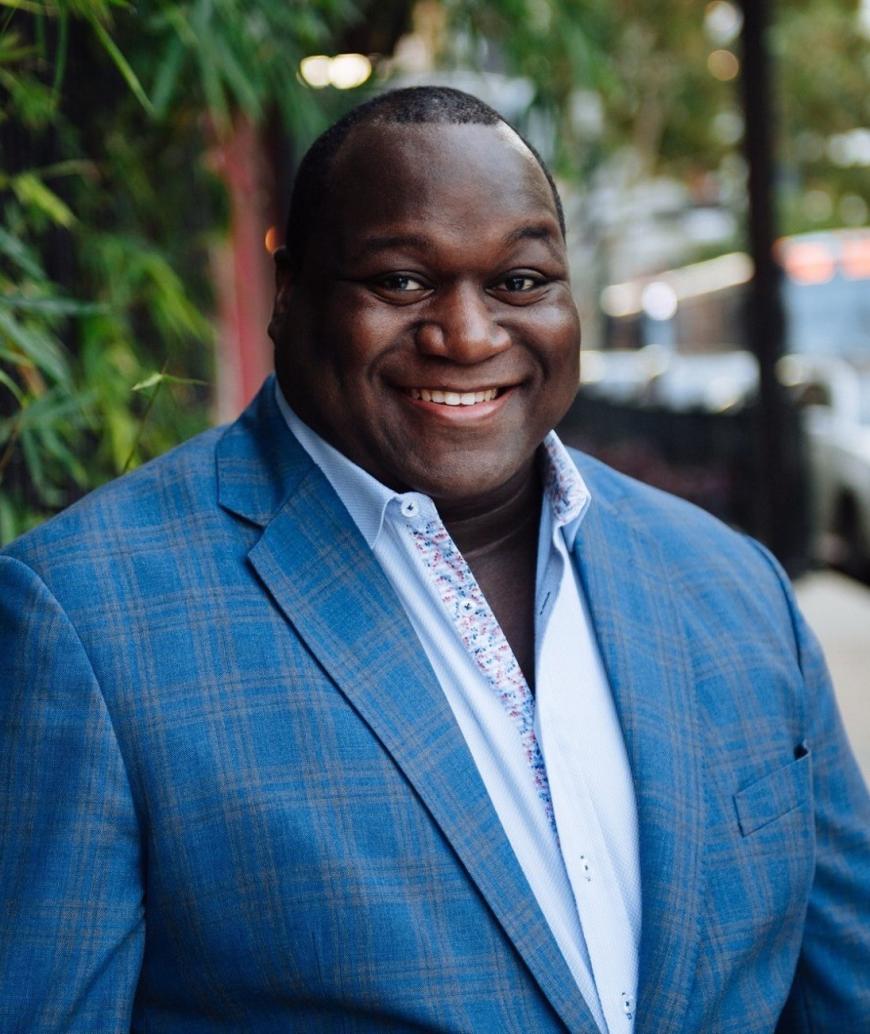
Slight of stature, Zhang plays big on the podium, her sweeping and stabbing gestures emphatic and exciting to watch. In the scherzo she seemed never to stop moving or attending carefully to every player onstage. Momentum and transparency, a lean singleness of effect, gave the impression at times of a large orchestra playing with the lithe, nimble character of a chamber ensemble. The fugue passage skittered along on frictionless light feet. Contributions, by turns witty and warm, from principal bassoon (Stephen Paulson) and associate principal horn (Mark Almond) stood out.
The Adagio, graceful as it was, came off as the least fully realized movement. But perhaps musicians and audience alike need a breather before the famous Finale (“Ode to Joy”). Once again Zhang opened with something unusual and persuasive. Normally more clearly punctuated into phrases, the lush thematic introit by the cellos and basses rolled out here as one smoothly sculpted single utterance. The woodwinds countered the restraint with some assertive statements, with the brass joining in with blazing combative light.
Baritone Reginald Smith Jr. gave the opening vocal lines a thunderous urgency married to a buoyant intimacy. “Oh friends,” he sang (in German), banishing torment, “no more of these sounds!” It was a battle cry and a plea, a direct invocation to make a joyful noise. It was as if he were singing to every member of the audience directly.
The “Ode” was launched, and Zhang, the orchestra, the four soloists, and a vibrantly animated San Francisco Symphony Chorus, under guest director David J. Xiques, never looked back. Smith and soprano Gabriella Reyes sang with particularly vibrancy. Tenor Issachah Savage and mezzo-soprano Kelley O’Connor were fine, if somewhat vocally overmatched by their fellow soloists.
In the end, everything was ascendant, gleaming, Friedrich Schiller’s aspiration in the text to sense the Creator and “Seek Him above the canopy of stars” made manifest. More than a few audience members cried back in assent at the final downbeat. The ovations went on and on.
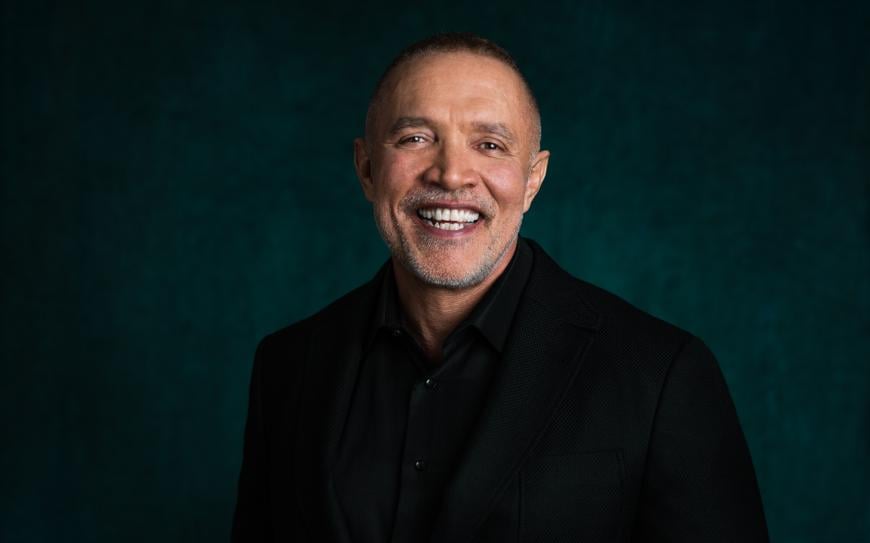
The first portion of the program was devoted to two works receiving their SF Symphony premieres, one from the 19th century and the other from the 21st. Samuel Coleridge-Taylor, a mixed-race British composer known as the “African Mahler,” composed his Ballade (1898) at the instigation of Edward Elgar. The 13-minute piece opened with a compact melody that recurred, got reworked, and in the most alluring passage, merged with a contrasting lyrical theme. But as the work kept revisiting its opening, borderline banal material, Ballade began to feel likes it was chasing its own tail.
Michael Abels’s nine-minute Emerge (2021), written during and about the effects of the pandemic on live music, was a witty, touching delight.
In a clever opening, the piece mimicked the sound of an orchestra warming up. It was everyone for themselves for a while, as musicians tried to come back from isolation and resume ensemble playing. Soon enough the lines began to mingle and fuse in speedy fugues, sustained dissonances that playfully refused to resolve, and more bravura solo work.
It wouldn’t be easy to “emerge,” the piece implied, but whispering strings and glittering bell sounds from the percussion persisted. Abels, whose credits include the skin-crawling scores for the Jordan Peele horror films Get Out and Us, made the process of reuniting here sound wonderstruck. A celebration from the brass burst forth as its own “Ode to Joy.” The way was paved straight through intermission to Beethoven.
Correction: The article, as originally published, misidentified the principal horn player for Beethoven’s Ninth Symphony.


